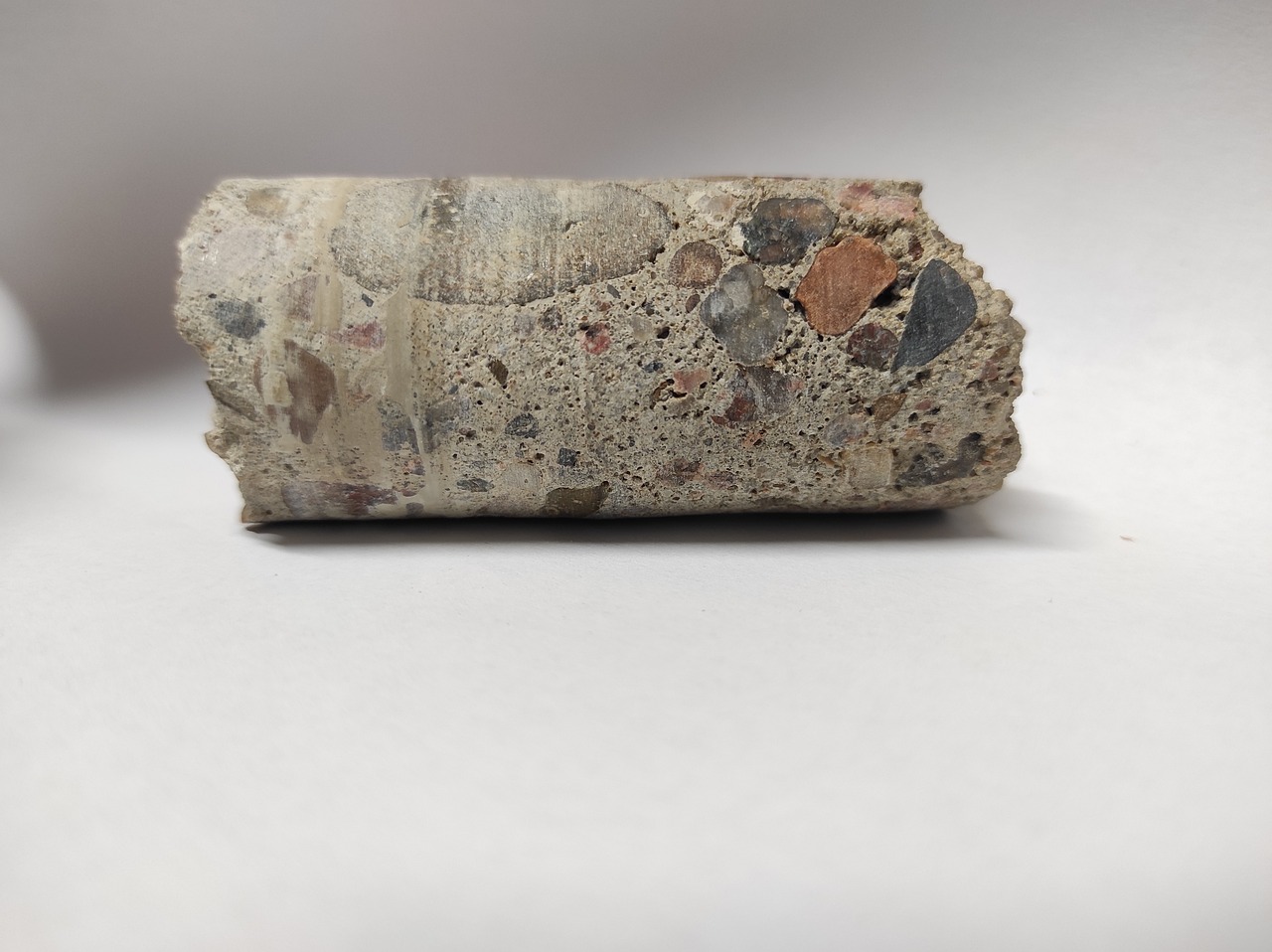Borehole
The word ‘borehole’ is: ‘The generalised term for any narrow shaft bored in the ground either vertically or horizontally.’ Ref Containment systems for the prevention of pollution, Secondary, tertiary and other measures for industrial and commercial premises (CIRIA C736), published by CIRIA in 2014.
High Speed Rail (Crewe – Manchester) Environmental Statement, Glossary, abbreviations and references, published by the Department for Transport in 2022, defines a borehole as: ‘A hole bored into the ground, usually as part of investigations, typically to test the depth and quality of soil, rock and groundwater. A borehole can also be used to dewater the ground.’
Rotary boreholes are used where drilled exploration through rock and other solid geological formations such as dense gravel is required. Depths of up to 100 m can be achieved and bedrock samples taken to a laboratory for examination.
Rotary open-hole boreholes are drilled where an understanding of the presence of voids is more important than the structural details of the ground, and are typically used in areas where mine workings are likely.
Rotary cored boreholes are drilled when the structural details of the underlying rock are required. A core barrel is lowered into the drilled hole and a flush circulated with air/mist or water.
[edit] Related articles on Designing Buildings
Featured articles and news
RTPI leader to become new CIOB Chief Executive Officer
Dr Victoria Hills MRTPI, FICE to take over after Caroline Gumble’s departure.
Social and affordable housing, a long term plan for delivery
The “Delivering a Decade of Renewal for Social and Affordable Housing” strategy sets out future path.
A change to adoptive architecture
Effects of global weather warming on architectural detailing, material choice and human interaction.
The proposed publicly owned and backed subsidiary of Homes England, to facilitate new homes.
How big is the problem and what can we do to mitigate the effects?
Overheating guidance and tools for building designers
A number of cool guides to help with the heat.
The UK's Modern Industrial Strategy: A 10 year plan
Previous consultation criticism, current key elements and general support with some persisting reservations.
Building Safety Regulator reforms
New roles, new staff and a new fast track service pave the way for a single construction regulator.
Architectural Technologist CPDs and Communications
CIAT CPD… and how you can do it!
Cooling centres and cool spaces
Managing extreme heat in cities by directing the public to places for heat stress relief and water sources.
Winter gardens: A brief history and warm variations
Extending the season with glass in different forms and terms.
Restoring Great Yarmouth's Winter Gardens
Transforming one of the least sustainable constructions imaginable.
Construction Skills Mission Board launch sector drive
Newly formed government and industry collaboration set strategy for recruiting an additional 100,000 construction workers a year.
New Architects Code comes into effect in September 2025
ARB Architects Code of Conduct and Practice available with ongoing consultation regarding guidance.
Welsh Skills Body (Medr) launches ambitious plan
The new skills body brings together funding and regulation of tertiary education and research for the devolved nation.
Paul Gandy FCIOB announced as next CIOB President
Former Tilbury Douglas CEO takes helm.
UK Infrastructure: A 10 Year Strategy. In brief with reactions
With the National Infrastructure and Service Transformation Authority (NISTA).























